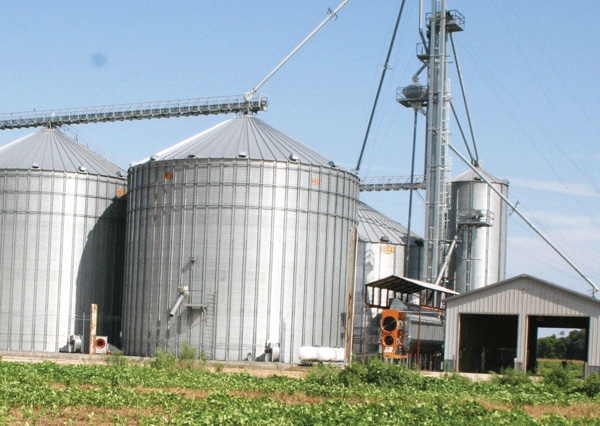
• The Purdue Energy Estimator projects energy costs for in-bin and high-capacity grain dryers.• While farmers usually know what they are spending to dry grain, they don't always understand how dryer components and operating conditions contribute to the energy bill,• Running the simulation provides results for four different drying strategies: Continuous natural air, constant heat, variable heat and self-adapting variable heat.
October 11, 2010

A new online calculator can show farmers where they might find energy savings as they dry their grain in drying systems.
The Purdue Energy Estimator projects energy costs for in-bin and high-capacity grain dryers. The online resource was developed by researchers in Purdue's Department of Agricultural and Biological Engineering.
It is free for public use and can be found on the Purdue Renewable Energy Web site at http://www.extension.purdue.edu/renewable-energy and then clicking on "On-Farm Efficiency."
While farmers usually know what they are spending to dry grain, they don't always understand how dryer components and operating conditions contribute to the energy bill, said Klein Ileleji, one of the Purdue agricultural engineers who developed the calculator.
"This tool enables them to do that, or at least gives them an avenue to look at grain drying systems more closely," Ileleji said. "With this estimator, they can run scenarios that will inform them ahead of time how much energy they are consuming on the farm and the factors that can help them reduce those costs."
Users begin by selecting either an in-bin or high-capacity dryer model from a menu of options. In-bin dryer users can calculate energy consumption and cost for corn, wheat and soybeans, using propane, natural gas or an electric heater. Users can choose among 82 locations within the Corn Belt and the date they plan to dry grain. About 30 years of weather data was entered into the estimator to provide more accurate drying cost results.
The in-bin estimator also asks users to enter initial and target grain moisture content, starting grain temperature, bin diameter and height, grain price in dollars per bushel, fan airflow rate and electric cost per kilowatt hour.
Four different strategies
"Running the simulation provides results for four different drying strategies: Continuous natural air, constant heat, variable heat and self-adapting variable heat," Ileleji said.
Those calculating high-capacity dryer energy use select among seven grain crops and propane or natural gas fuel, and enter fuel cost per gallon, electricity cost, beginning and desired grain moisture, ambient air temperature and relative humidity, and drying air temperature.
Seconds after the user enters the information, the estimator spits out its results: fuel, electric and grain shrinking costs per bushel; drying time in days; average moisture content; MBTUs required for drying; and BTUs per pound of water. Additional data fields appear for high-capacity dryers.
"Keep in mind that these are best estimates," Ileleji said. "While they are research-based and we've done our best to make the tool as accurate as possible, results should not be construed as actual savings."
The estimator is a work in progress, Ileleji said. At this time just one dryer manufacturer's models appear on the Web site, but others will be added as information is available, he said.
Research used to develop the estimator was funded in part through a U.S. Department of Agriculture Natural Resources Conservation Service Conservation Innovation Grant titled "Exploring Biofuel Alternatives for Energy-Intensive Seasonal Drying Processes." Most of the background research was conducted by Dirk Maier, former Purdue professor and agricultural engineer.
Dan Ess, a Purdue agricultural engineer, also is a co-principal investigator for the estimator project.
You May Also Like



